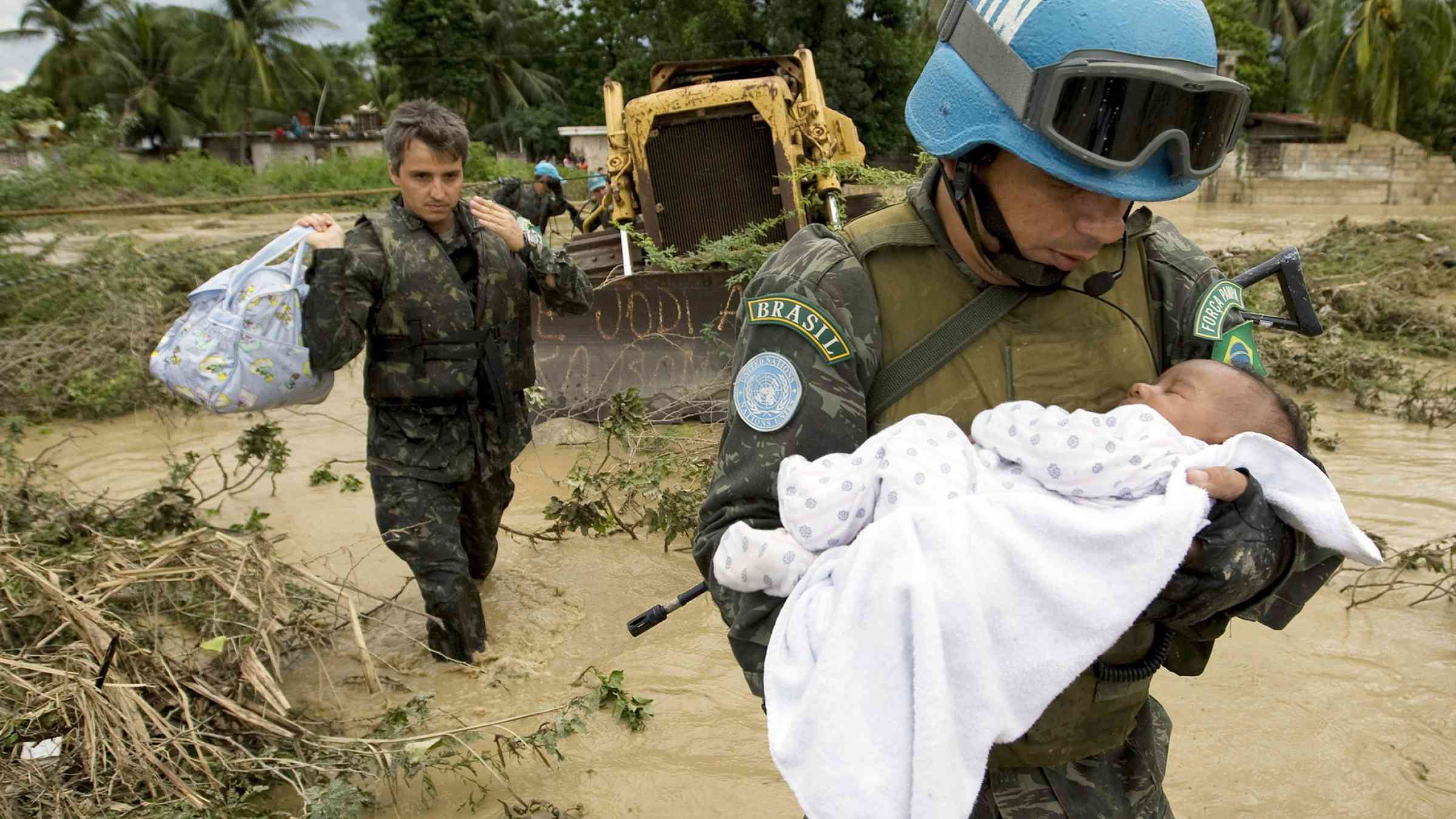Addressing disaster risk can help prevent crises in Asia-Pacific

BANGKOK, 31 January 2020 - The Laos dam collapse, the massive flooding in Iran last year, and the quarter of a million people displaced by drought in Afghanistan. These might seem like isolated events, but they all have one thing in common; they are disasters that could have been prevented.
Prevention is at the core of disaster risk reduction, which aims to help communities and countries address underlying risk factors and build resilience.
As a policy approach, prevention has assumed an increased prominence thanks to the support of UN Secretary-General António Guterres who upon taking office made it a priority.
Speaking recently to mark the 75th anniversary of the United Nations, he said: “Prevention must orient all we do as we engage across the peace continuum.”
Tasked with translating his vision into action is Ms Ana María Menéndez, Under-Secretary-General, who visited Bangkok on 28 January to discuss the development of a prevention platform with the regional UN offices based there.
The Regional Coordination Mechanism and the Regional Inter-Agency Standing Committee convened a multi-agency briefing for Ms Menéndez on the types of risks impacting Asia-Pacific and how UN agencies are responding.
“Prevention requires a cultural shift,” said Ms Menéndez, adding that “we must have a conversation about risks and about factors for resilience. To enable this, we need to ensure joint risk analysis including elements of resilience building.” She also emphasized the need to adopt a systemic approach to addressing inequality, climate change and gender inequalities.
The briefing highlighted that Asia-Pacific is experiencing a confluence of factors that is increasing its risk to disasters; environmental degradation, climate change, rapid urbanization, and inequality, to name a few. These risk drivers are responsible for the majority of disasters in the region, which often strike in the form of high-frequency, small-scale disasters.
These disasters also exacerbate many protracted and recurrent crises in the region and can worsen the suffering of already vulnerable groups, especially women and girls. However, not enough granular data exists to support a proper understanding of the risks and vulnerabilities, which is key for successful resilience building.
At the regional level, the UN is responding to the growing risks by offering analysis to guide policymakers, integrating prevention and risk reduction into its governance and development efforts, and by building the response capacities of regional partners for early warning and early action.
However, there is an urgent need to scale up risk reduction efforts in fragile states, where the abilities to cope are the weakest and the needs are the greatest.
“We need to do more to help the countries most impacted by crises, we can’t leave them behind. These countries are not receiving the same level of support or technical assistance as other countries,” said Ms Loretta Hieber Girardet, Chief of UNDRR Asia-Pacific who presented on behalf of the regional UN system.
To address this gap, UNDRR is currently in the process of developing tools that will help guide the integration of disaster risk reduction in humanitarian contexts. A global consultative workshop to validate the tools will be organized in Geneva on 27 February 2020.
The benign nature of disaster risk reduction can also offer an entry point for bringing warring factions together and create an opening for a larger strategic dialogue. Mr Hans Hans Guttman, Executive Director of the Asian Disaster Preparedness Center, offered some insights from his past work in the area of water rights, saying:
“People want to cooperate around flood reduction and early warning, for example, and this type of water diplomacy can open up new opportunities for discussions around water rights and more contentious issues.”